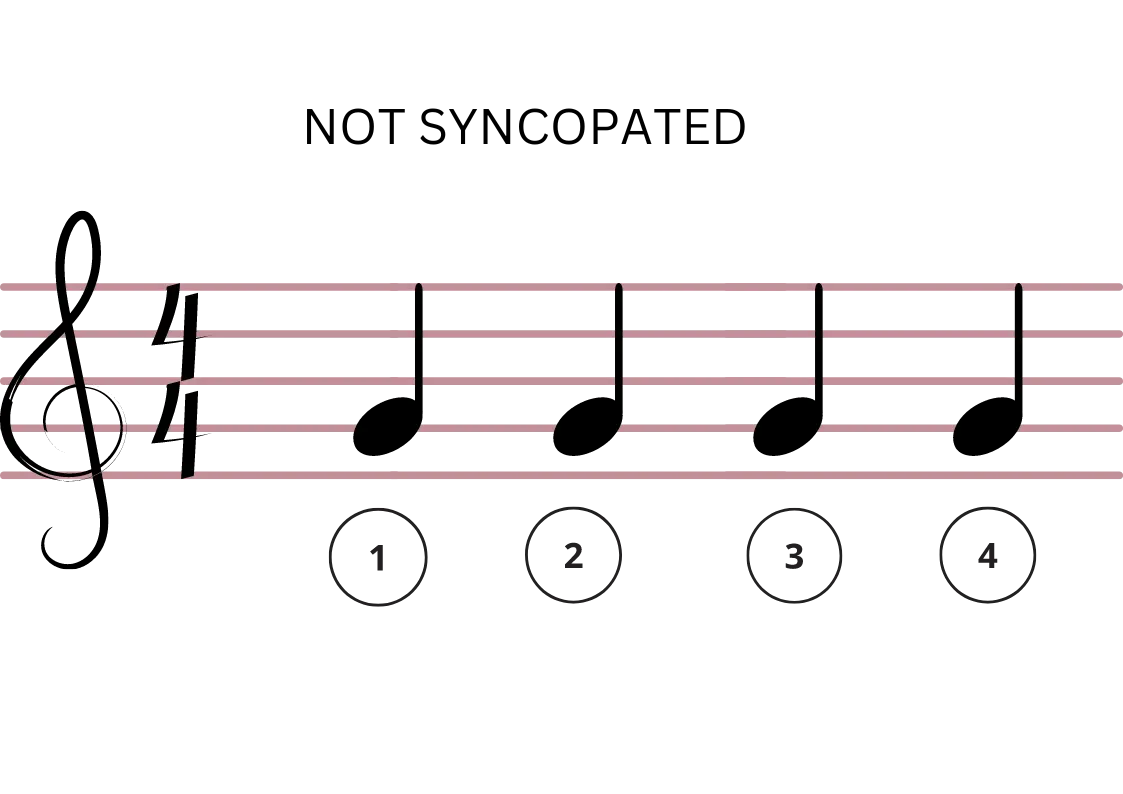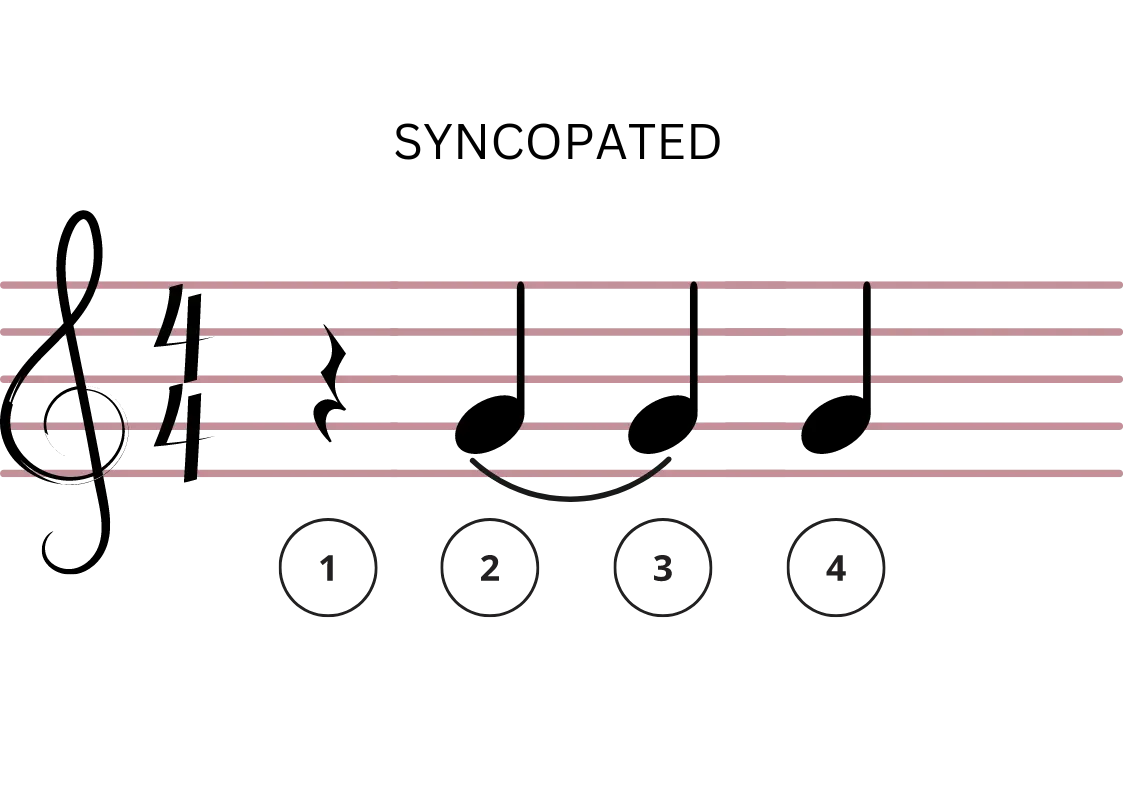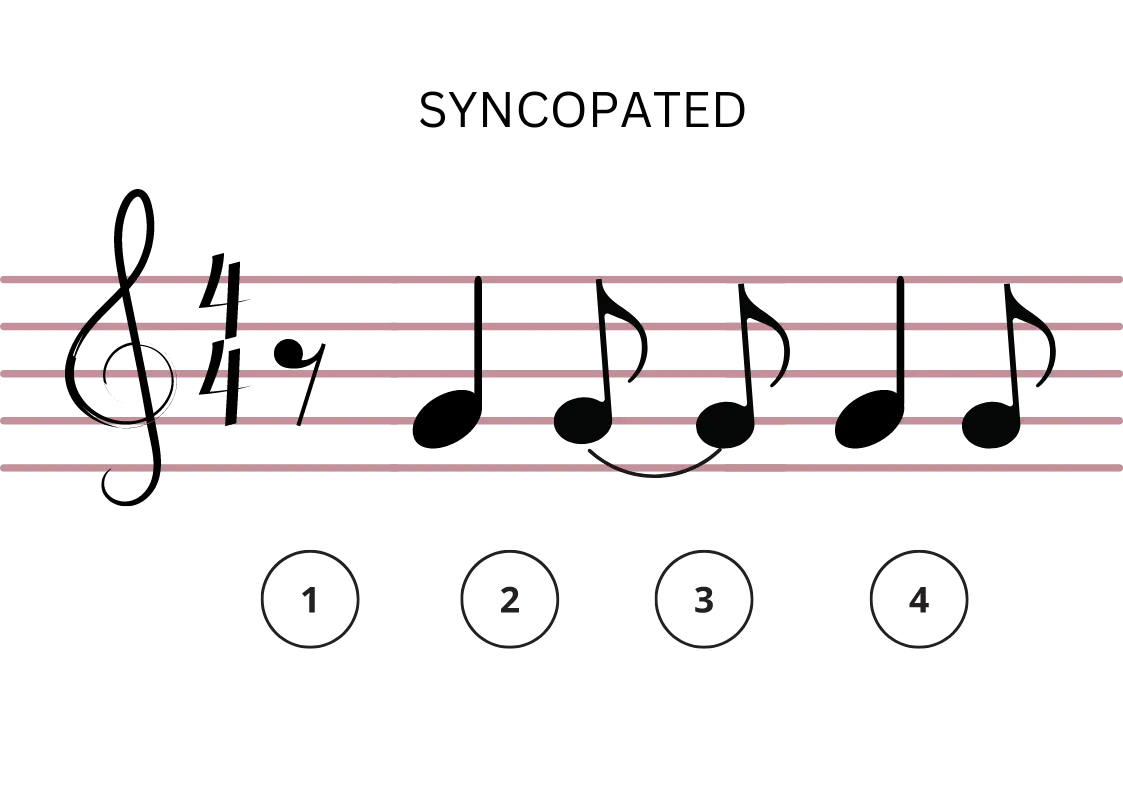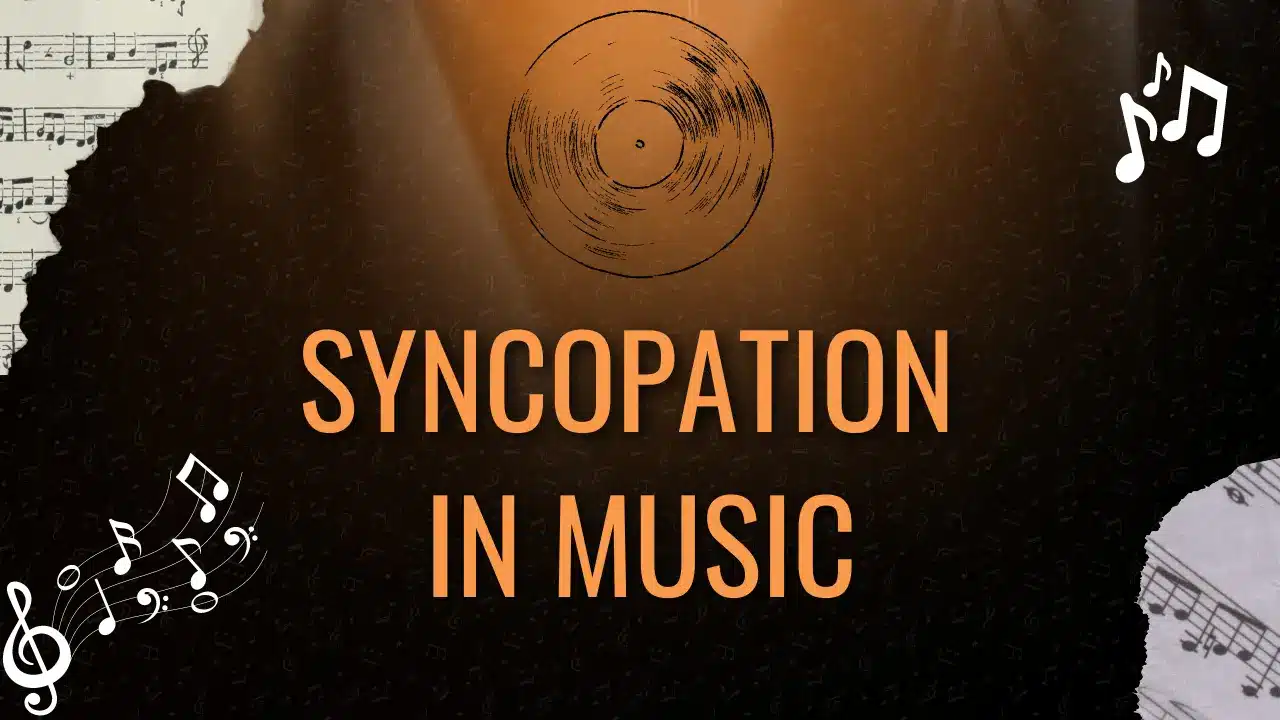The word syncopation gets thrown around a lot especially when you learn sheet music. Syncopation in music is a phenomenon when the regular flow of rhythm gets changed. Let us get into the basics to learn how a syncopated rhythm works.
Syncopation in Music
Music composers sometimes add an accentuation on weak beats or off beats in a measure and change the regular flow of rhythms. This abnormal shift in rhythms is called Syncopation in Music. Time signatures have a certain pattern of rhythms throughout the piece of music. It disrupts that pattern thereby creating a surprising or an interesting element. It is a rhythmic technique used in every musical genre. Therefore, syncopation can be defined as a technique that breaks a normal rhythmic pattern into unique, interesting and complex patterns


Historical Development of Syncopation in Music
Syncopation rhythms started when polyrhythms were commonly used in African music. In the late 19th, ragtime music became popular among African-American musicians. Ragtime music brought syncopation rhythms in an attempt to creating more lively sound
The 20th century gave us the precious Jazz with more complex syncopated rhythms. Playing against the regular pulse is improvising in Jazz Music. It became a basic element in Latino music such as samba, samba, tango etc. Contemporary genres like pop, rock, funk etc, used syncopation rhythms to make the groove more energetic and interesting.

Did You Know?
Syncopation has been used in classical music since the Baroque era. However it became more prominent when music composers like Stravincky and Bartok experimented with rhythmic patterns thereby including syncopation.
How does Syncopation in Music Work?
We now know that syncopation is the placement of accents or an emphasis on a weak beat that disrupts the regular flow of rhythm in music. So let me give you detailed info on how it works.
Off Beat Accents:
Say, there is a musical piece in 4/4 time signature. And so the accents would typically fall on 1st, 3rd beats. You can simply accent the weak beats that are the 2nd and 4th beats to make a syncopated feel.

More complex syncopation involves placing emphasis on the off beats that are usually counted with “and” in music. Look at the image shown, in 4/4 the main(quarter) beats would be 1,2,3,4 beats. The off beats are the eight beats counted with “and” have an emphasis. This makes this an syncopated rhythm.
Polyrhythms
When different rhythm patterns are played together simultaneously, sometimes syncopation rhythms overlap with those polyrhythms. For example, melody lines would have a particular/different rhythm while a percussion or bass guitar might have syncopated rhythms. Remember that the difference between syncopation and polyrhythm is that having layers of different rhythmic patterns at the sametime is polyrhythms and syncopation is accenting offbeats.
Rhythmic Displacement
We know that syncopation in music involves momentarily shifting into a different rhythmic pattern and back to the normal pattern. This interrupts accents on the strong beats creating an emphasis on weak beats makin the entire scene unpredictable and complex
Syncopation with Ties and Rests
Syncopation in music is written with ties in some cases. Notes are sometimes tied to male it sounds longer than usual to create unexpected rhythms. Also placing rests between notes to disrupt the regular flow of rhythms can also make syncopation rhythms as shown in the image.
Syncopation in Classical Music
Alright, a moment of truth! I have never heard of the word syncopation in music until I was working out one of Bach’s Classical Piece. Like I’ve mentioned earlier in this text, the baroque era saw the development of Syncopation. Popular Baroque Composers like Bach added syncopation rhythms in his compositions to create more lively and energetic masterpieces.
This was then followed by composers like Chopin and Liszt who added more complexity to syncopated rhythms to create an emotional intensity in their compositions. Syncopation was among many interesting concepts brought to light during the Romantic era.
How to Improve Syncopation Skills?
Syncopation just like any other concepts can be improved with thorough listening and with practice of few exercises. Here are a few tips for improving Syncopation in music.
- Listen Actively
Every genre in music has syncopated rhythms and the best way to identify these passages is by listening actively. Concentrate on the different rhythmic patterns played by the different instruments. Start with easy pieces and then work your way up to complex rhythms. - Music Rhythm Basics
Syncopation in music is somewhat an advanced concept in music. To understand this concept in depth, you must know your basics. Try to learn concepts such as time signature, notations including notes and rests, note values etc. - Rhythmic Exercises For Better Understanding
Before you start trying these exercises, make sure you know some of the music rhythm basics. Try clapping these syncopation rhythms. This helps you develop the ability to identify different patterns with accents. - Identify Notated Patterns
Try to identify and study the syncopated patterns of rhythms. Different composers use a variety of ways to make the rhythms sound more lively. Syncopation in music can also be written in so many different ways. Analyzing syncopated rhythms will help you develop the ability to recognise syncopated rhythms more easily. This exercise has helped tons to understand syncopation in music. - Explore syncopation in different instruments
You should definitely explore how syncopation is written for different instruments. Percussions like drums, bongos or tambourines offer unique syncopated patterns. In other instruments like piano, vocals or guitar sounds distinctive. Try and analyze these sounds to produce syncopation rhythms on your own.
Why is Syncopation Important?
Firstly, this rhythmic technique adds an element of interest to the rhythmic pattern by placing accents and stresses on places that are least expected. Listening to the same pattern of beats would be boring, won’t it? Therefore, syncopation rhythm makes the music more dynamic and lively.
Secondly, it makes the groove of the song more engaging because it makes the movements sound contrast and different from one another.
Thirdly, there’s no doubt that syncopation in music can deliver a variety of emotions. Lastly, many genres of music rely on this technique extensively. Genres like reggae, jazz, funk etc., need this to bring out its flavor.
Closing thoughts
Musical concepts can be a little difficult to appreciate when you are just beginning to grasp its significance. Concepts like syncopation in music adds richness and unique characters to music that you write. Educating yourself about these concepts makes you an even better musician. So, book a free demo with us Now, and begin your musical journey!
FAQs
What is syncopation in music?
Syncopation is a rhythmic technique that breaks normal flow of rhythms into a different patterns.
What does syncopated rhythms mean in music?
Syncopated rhythms refers to the emphasis placed on off beats rather than strong beats.
How to identify syncopation in music?
Syncopation is simply identified by the accentuation placed on off or weak beats.
How to create syncopation in music?
You can create it by adding emphasis to off beats through, ties and rests in music.
What are some examples of syncopation in famous songs?
Uptown Funk by Bruno Mars, Shape of You by Ed Sheeran.
How does syncopation add rhythm and interest to music?
It adds rhythm and interest to music by making it sound more engaging and lively.
Where does syncopation come from in music history?
It branched out from afro music.































